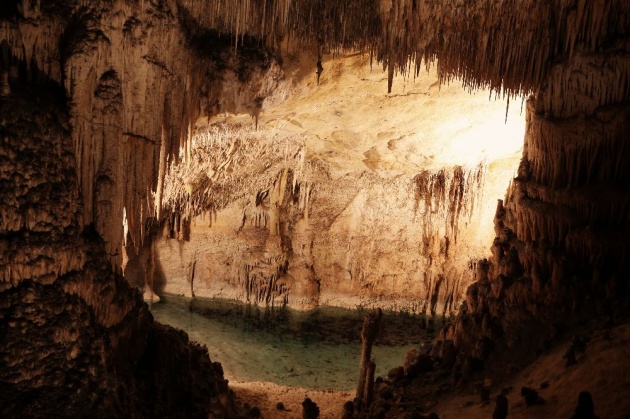
image source: www.pexels.com
Hello, guys!
I was wondering what topic to choose for this blog, and since I really enjoy writing about travel and nature, I think I haven't expressed myself about the caves. I think I do have a blog briefly mentioning sea caves, but these are different than the ones I want to talk about today. I'm referring to the caves that are on the land: under the ground or high in the mountains. Here we go.
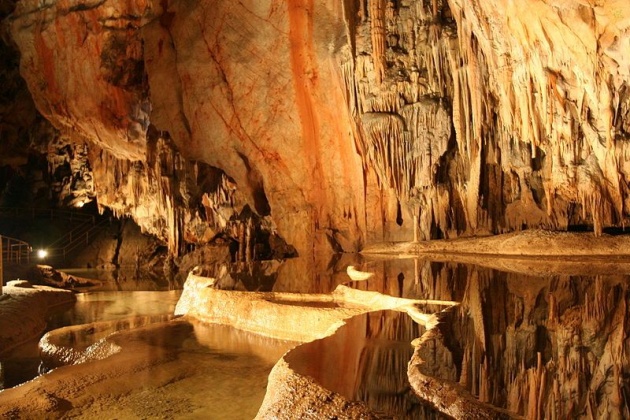 image source: www.google.com
image source: www.google.com
In my country, and I'm guessing that the situation is quite similar in many other countries, caves are now just tourist attractions for their amazing formations formed by the rocks and the water in long periods of time. But, if I forget their value for tourists, those formations are called speleothems and vary largely in terms of size, shape, location, etc.
A speleothem (pronunciation: /ˈspiːliːəθɛm/; Ancient Greek: "cave deposit"), commonly known as a cave formation, is a secondary mineral deposit formed in a cave. Speleothems typically form in limestone or dolostone solutional caves.
There are many different types, but I'll be mentioning the most common ones. Let's see what kind of formations or speleothems can exist in a cave:
1. Stalactite
 image source: www.google.com
image source: www.google.com
This is a cave formation which is hanging from the ceiling of a cave and increases it's length downwards. The exact way of growing of the stalactites is happening through a chemical reaction, caused by water and the calcium, contained in the caves. Since their formation depends on factors such as temperature, structure, and consistency of the rocks, to form a large stalactite, hundreds of years are needed. Some of the largest stalactites reach several meters in length.
2. Stalagmite
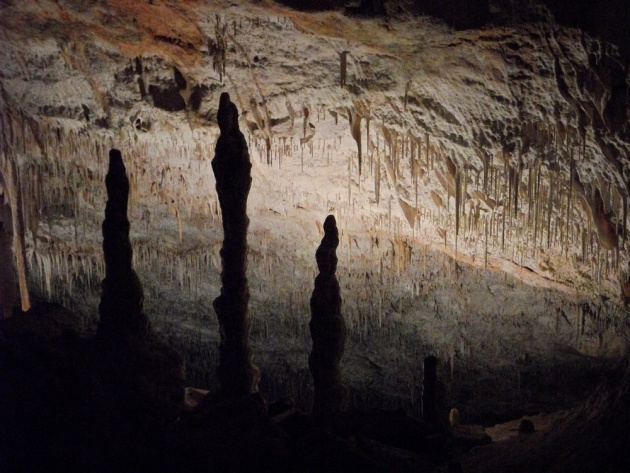 image source: www.pixabay.com
image source: www.pixabay.com
It is a formation similar to stalactite, but its base is actually on the floor of the caves and increases its height from there. Stalagmites are formed by the water dropping from the ceiling of the caves, again through a chemical reaction. The water is basically shaping the limestone of the rocks and creating structures on the floor with various shapes. Depending on the shape of the stalagmite, it can be classified in a few groups of formations, described by geology. However, I'm not going to be that detailed.
video source: www.youtube.com
3. Column (Stalactone)
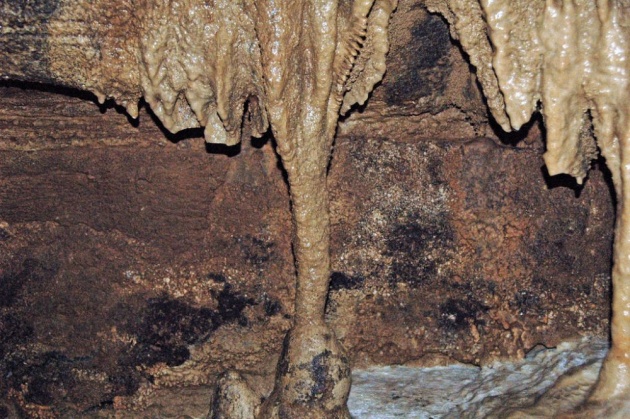 image source: www.google.com
image source: www.google.com
This speleothem is a combination of the two formations above. It is formed by the same processes of reactions of calcium with water, but it can be called a column after the stalactite and the stalagmite make a single formation. Considering the time needed to form any of these two, for a column to be formed, the time frame is even bigger. That's why they are one of the most attractive and stable formations. And as a difference to the other two types, columns are higher. I think the last one is very logical.
4. Drapery
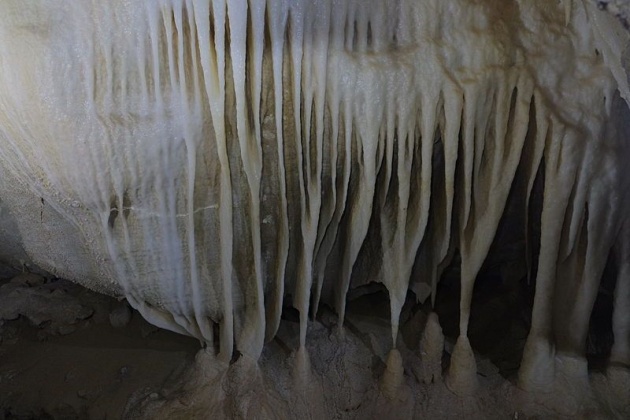 image source: www.google.com
image source: www.google.com
This formation is a thin structure with similar to a real drapery shape and ornaments. It is hanging from the ceiling of caves, just like stalactites. They can be of a different size, but in most cases, draperies are an impressive view. They are also formed by minerals and shaped in their particular look by the flowing water, found in the caves. As the water flows on the easiest accessible route, it doesn't go straight downwards, but rather makes turns, and that's how the curtain-like structure is created.
5. Straws
 image source: www.google.com
image source: www.google.com
These are cylindric formations, similar to the straws, and that's where their name came from (also called soda straws). Just like the plastic straws their inside is hollow, which makes these speleothems extremely fragile. Despite all that, they can become surprisingly long. Straws hang from the ceilings of the caves, similarly to stalactites. The only difference is their shape and structure. In fact, in some cases, straws can turn into stalactites later in time, depending on the natural processes happening in that location.
6. Flowstone
 image source: www.google.com
image source: www.google.com
This is a formation on the floor of the caves, created by the water flowing over a rock, or a stone. Then the stone gets covered by different smaller and bigger shapes, with different sizes, as well. These are common formations, found in most caves, as it's the natural way water flows forming them.
Besides these six types of formations, there are others, smaller structures. I'm not going to explain about them, but at least I can mention some, like cave corals, helictites, cave crystals, etc. All of them are well-described and classified into groups. And on a side note, these formations are typical for the caves, but the caves are not the only place they can be found.
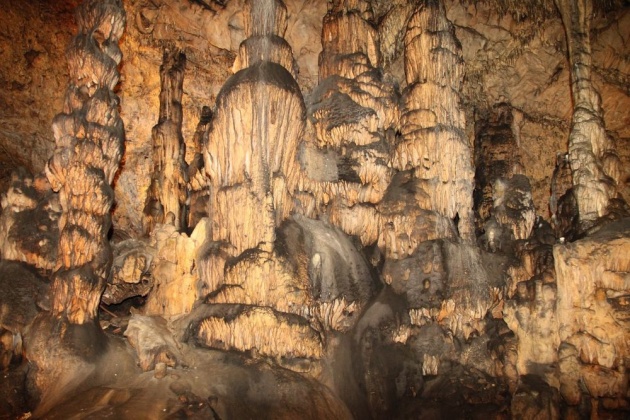 image source: www.pixabay.com
image source: www.pixabay.com
Another point I want to mention is that the color of these cave formations can be different depending on the cave, or even in one cave can be found speleothems of a different color. For example, they can be brownish, or white, or more reddish, etc.
Back to the tourist aspect of visiting caves, many of these formations have been named by people. Some of them so closely resemble people, or animals, objects, and others, that it's obvious what their names would be. But others can be seen differently by different people depending on the imagination. Either way, to visit a cave full of those impressive cave formations is like you go into a nice fairytale, and see magical creatures at each side of you. I think visiting a cave is something everyone should try if he/she has the chance to do so.
video source: www.youtube.com
Cave Life
And lastly, I want to briefly talk about the life inside a cave. Well, it will be brief as the species available in a cave are not that many. As the temperature is lower and it is dark, the variety of species is extremely limited. The most common inhabitant of a cave is the bat. They use caves to hibernate or to sleep during the warm season. In a single cave could also be found several species of bats. Most of the fauna consists of animals that don't spend their entire time inside the cave, but rather, use it at some periods. There are different kinds of insects, reptiles, and smaller species, like bacteria and microbes. In regards to the flora, as there is not enough sunlight (not to say, not at all), plants can't grow inside the caves, with a few exceptions. Some mosses can be found in rare cases and also fungus types.
 image source: www.google.com
image source: www.google.com
I have visited maybe four or five of this type of caves (with formations, or also called caverns) and was always amazed and fascinated by their look. At each cave, there is usually a warning sign and additionally, the tour guides warn that it's very important to be careful and preserve the formations, as it takes a lot of years for them to reach this shape and size. Taking photos is not allowed, especially using flash, as some of the hibernating bats might be disturbed. Temperature is usually very low, so if outside is summer, inside is probably winter temperature. So, the difference is really huge.
Caves are definitely impressive with all of their formations and figures, each one with its unique style. I hope I managed to be useful.
Thanks for reading!
- NinaB



